 Looking for something festive to spice up your D&D game this December? Or perhaps you are looking to run an interesting one shot to give your players a break from the weekly campaign you run. Either way, here are nine Christmas-themed enemies, filled with cliche and class, to throw at your players this holiday season. 1) Silent Knight “Sleep in heavenly peace.” Silent Knight is a noble holy warrior, one who has no patience for vocalisation. His Aura of Silence disrupts nearby spellcasters, and his martial prowess with his longsword is a challenge even to skilled warriors. And if you are bested by this knight, nobody will hear you scream. 2) O’Holy Knight “Long lay the world in sin and error pining, till I appeared and the soul felt its worth.” This blessed knight basks in his own image. He sheds light in an area around him, and delivers powerful smites to any who oppose him. If you can outmatch his skill… and perhaps his ego, then you will stand a chance at defeating him. 3) Carol, of the Bells “One seems to hear, words full of fear, from everywhere, filling the air.” This Hag is into Christmas Fear more than Christmas Cheer. With enchanted bells on a chain (animated object) she can instill a fear and hatred of Christmas ornaments, such as tinsel and bells. 4) Little Drummer Boy “Shall I play for you, pa rum pum pum pum.” Don’t let this halfling fool you, if your feet are moving, it’s to his beat. Using a very rare form of psychic manipulation through the rhythm of his resonance, the Little Drummer Boy can control the speed and direction of the life forms around him. 5) We Three Kings Of Orient (Also 6 And 7) “Field and Fountain, Moor and Mountain, King forever, Ceasing Never, Over us all to reign.” Three kings of orient, the Shadow, the Blade, and the Bow. Respect these beings of eastern tradition, or they will tear you to pieces. The Shadow will dart from corner to corner, waiting until the perfect time to strike. The Blade will engage the toughest-looking opponent head-on, and will fight fiercely to the death. The Bow will position themselves at a vantage point, and pepper his enemies with piercing bolts. 8) T’was The Knight Before Christmas “He spoke not a word, but went straight to his work.” This powerhouse has a cold, meticulous fighting style, which is designed to cut down enemies and then finish them where they stand. He will not allow passage beyond his guardian point in Saint Nicholas’ dungeon. If you want to get past, you will have to go through him! 9) Saint Nicholas “You better watch out...” A fallen angel, Saint Nicholas is a powerful celestial warrior who has retained his divine power after going rogue. When he is calm, he is a calculating, skilled opponent, with precise blade mastery that will prove a difficult challenge for anyone in his way. But if he is wounded, you better watch out! Saint Nicholas is prone to enraging once bloodied, abandoning accuracy and composure for savage attacks and reckless strikes. Dungeons and Dragons is more than just a weekly role-playing game for you to turn up, kill some orcs, and go home. Dungeon Masters, fill your world with iconic and memorable enemies. Cliche is just icing on the cake when used in the right dose. Players, push your DMs to be more and more creative, and to experiment with their game. I hope that everyone is getting some time off in the next month or so, and is able to play some RPGs over the holidays.
Peter is an avid dungeon master, role-player, and story teller. When he's not running homebrew campaigns, he is creating new worlds, or he is reading and writing fantasy stories, forever immersing himself in the gaping black-hole known as the fantasy genre. Picture Reference: http://tvtropes.org/pmwiki/pmwiki.php/Main/BadAssSanta 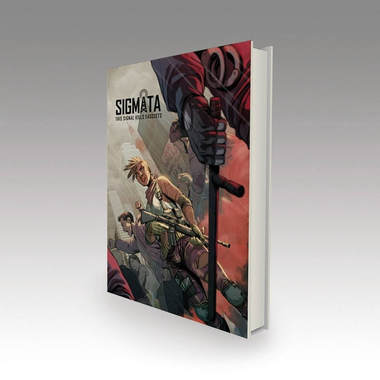 (Editor’s note: responses edited slightly for clarity.) Check out SIGMATA: This Signal Kills Fascists here. Unless you’ve literally been living under a rock, you’ll have noticed that politics have been a bit, well, we’ll call it “touchy” this year. And while our hobby can be an escape from the trying times in which we live, it can also be a big release to deal with our anxieties about rising authoritarianism through gaming and roleplaying. I chatted with Chad Walker about his fascist punching (and shooting, stabbing, etc) game, SIGMATA: This Signal Kills Fascists. 1) Let’s start at the beginning. How did fascists take over America in your dystopia? Without giving too much away, the alternate American history of SIGMATA begins in 1954. Wisconsin senator Joseph McCarthy would not be censured for his outrageous witch hunt against alleged Soviet sympathizers and supposedly blackmail-prone homosexuals that had infiltrated the State Department and other branches of government. Instead, he would go on to win a primary battle against Richard Nixon, defeat John F. Kennedy in the general election, and become the President of the United States in 1960. He wins by normalizing the concept of the “Interior Threat,” the notion that America’s failures in industry and military adventure were not due to ineffective policy, failed diplomacy, nor a refusal to adapt to evolving markets, but rather, due to an international conspiracy of Soviets, homosexuals, immigrants, ungrateful minorities, and effete globalists committed to destroying the American way of life from the inside. Between 1954 and SIGMATA's 1986, that ideology has had two solid decades to materialize, mechanize, and mobilize. 2) One of the first things that struck me about the world you have created is the diversity of groups which make up the Resistance, especially since some seem antithetical to each other. How did you decide to include the radical left, libertarian militias, Evangelical Christians, and the wealthiest Americans as the opponents of fascism? If it feels totally wrong, you're my target audience. As part of the game's exploration of how tyrannies defeat people movements, I thought it would be fun and instructive to create an imaginary popular front so disorienting and discomforting to players in real life that their biases would bleed into the gaming fiction. Divide and conquer is Tyranny 101. Even though it's not a secret, we all fall for it. Some folks seriously stopped reading as soon as they read the line about factions, only to race to Twitter and concern troll about it. The militias, evangelicals, and business people would support fascism, they'd insist. Yes, certainly some would. Maybe even a lot of them. Thing is, it's pretty natural to think of these groups as monolithic blocks when it comes to politics... "the" Evangelicals, for example, or "the" radical Left. But these groups are, themselves, extraordinarily diverse. We can quote statistics all day to reinforce our biases (e.g. 80% of [insert group] voted for [insert candidate]). But there's another way of looking at those statistics: *only* 80%? You mean 1 out of every 5 of them is a Resistance sympathizer who is on the inside already, primed to counter-recruit and/or sabotage at the Resistance's behest? Why wouldn't you break bread with these folks? I mean, other than you want to lose. Westerners often look at the very messy struggles happening all over the world, aghast that sectarianism continues to serve the interests of the some of the most brutal and vile regimes in history. Then they go high-five each other while posting memes alienating the very men and women who could very well be their brothers and sisters in arms if push came to shove. 3) This is a very political game, during a very politically divisive time. Have you received any blowback from unsympathetic gamers? Yes, though none of it was a surprise. I've seen some Nazis and forum trolls hating on the game, but Nazis are gonna Nazi. I've also seen some *intense* hand-wringing from some leftists, mostly concerned by the ahistoricism of a temporary Left/Right popular front against fascism in a game about FM radio-powered cyborg revolutionaries. I'll let that sink in for a moment. I've also been accused of promoting fascism, McCarthyism, or generally being to the right of Timothy McVeigh (may he burn in Hell). I'm not complaining... when you do anything explicitly political, you're going to ruffle a few feathers. There's also the challenge of being unable to articulate the rationale of very, very intentional design choices in the marketing blurb, so it's reasonable that folks might hit a snag on some of the hyperbole or strong language. I gotta say, though, that one of the best things about 80s film and television shows is that despite that decade's extraordinary racism, sexism, and jingoism, kicking Nazi ass was an unambiguous, equally-opportunity public good. You didn't have to check in with the gatekeepers of party purity or be told to calm down by pearl-clutchers. 4) What can you tell us about The Signal? Where did the idea of it come from? How much can you tell us of its in-game origins? How closely is it tied to the cybernetics in the game? Are members of the Regime able to make use of it? I get a lot of questions about the Signal. I'm not gonna go into the specifics of the Signal that are represented in the game's fiction. In part, because it is a surprise, but mostly because the fiction of the Signal is not nearly as interesting as the real life historical event that inspired it. As a security professional, I try to influence the design of resilient, redundant systems that can survive and thrive even in the face of disaster or massive attack. All of us witnessed one of the most gorgeous and cyberpunk-as-fuck examples of this during the Egyptian Arab Spring in 2011. The Muburak regime killed the Internet in an attempt to disrupt the uprising in two ways: 1) make it harder to organize, and 2) make it harder to beacon out to the international community to apply external pressure on a tyrant. To defeat this censor, the Egyptians went low tech. They smuggled in satellite phones, communicated over HAM radio, and even busted out their dial-up modems to hit a prehistoric BBS in Sweden. Anything and everything to keep beaconing out to the world, to keep Repeating the Signal, simultaneously a technical signal while also being an international message of defiance and legitimacy. That incredible lesson in revolutionary organizing using low tech means was something I sort of stowed away for safekeeping. 2016's terrifying resurgence of fascism in the West made me dust it off. There's more lessons of the Arab Spring that aren't as jubilant, like how the Signal can be smothered or distorted by effective counter-insurgent techniques. Assad is still in power because he figured this out (may he also burn in Hell). Anyways, there you have it. That's the real secret to the Signal. In the game, the Signal is the key to victory. The Receivers' subroutines (superpowers) and blades (cybernetic modules) are absolutely tied to the strength of the Signal, which is, in turn, determined by how well the Resistance is doing in taking over FM radio towers, spinning up pirate radio stations, strategically placing repeaters throughout rural areas, and distributed the Signal in data-form over BBS networks. As to your last question, can the Regime make use of the Signal? I guess I'll answer that with another question: do you think super-powered clashes between nigh-invincible cybernetic commandos would make for some good gaming sessions? 5) All of the stretch goals sound rad. Which was your favorite to write up? You mean which of my children do I love the best? Seriously, that's a really hard question. I think it's safe to say that tonally, they all hit different spots. I know there are backers out there who are more excited about these alternate settings than they are the core SIGMATA setting. And that's exactly why I reached out to these folks. I'll reserve judgement of my favorite until I see them completed. Me and the various stretch goal authors have only generally agreed on the surface level elements of their setting. I anticipate being surprised and delighted. 6) You’ve mentioned in the risks and challenges section that you are in the risk management field and that you’ve prepared for the worst, even though this is your first Kickstarter. Can you give specific examples of how your day job has helped you through the process? It's pretty simple. Identify single points of failure and have a backup for each. If person X gets hit by a bus, what is the plan? Who will carry on their work, and what does that mean for the product? Have all the requisite account passwords (KS, bank accounts, email, etc.) been securely distributed to "break the glass" locations? There's also the idea of learning from other Kickstarters that have run into unanticipated problems, and taking actions to avoid the same fate. Yes, I could have opted for an off-set print, outsourced order fulfillment, and crossed my fingers that everything worked out OK. But I've seen that go haywire, too, creating major headaches for backers and the unfortunate, well-meaning creators who have to manage their outrage. I'm not an expert in finances or shipping logistics, so I offloaded these tasks to DriveThruRPG, to ensure it's done right. Does it impact the project's margins? Sure. But people are gonna' get their stuff no matter what, and that's really all that matters. 7) Finally, what are your plans to support SIGMATA in the future? It's really up to the backer community, the subsequent community who buys it after the KS campaign, and how SIGMATA is received by players. I'd love to spend a few years really developing this game... diving deep into iconic 80s settings like Miami or Detroit, developing "instant adventure" kits for GMs, and extending the idea into different genres (e.g. horror, science-fiction, fantasy). There's a ton of exciting stories buried in this really simple idea. Check out SIGMATA: This Signal Kills Fascists here. Phil Pepin is a history-reading, science-loving, head-banging, river-running nerd, who would like nothing more than to cuddle with his pups and wife. Picture Reference: Artist rendition of the hardcover edition. 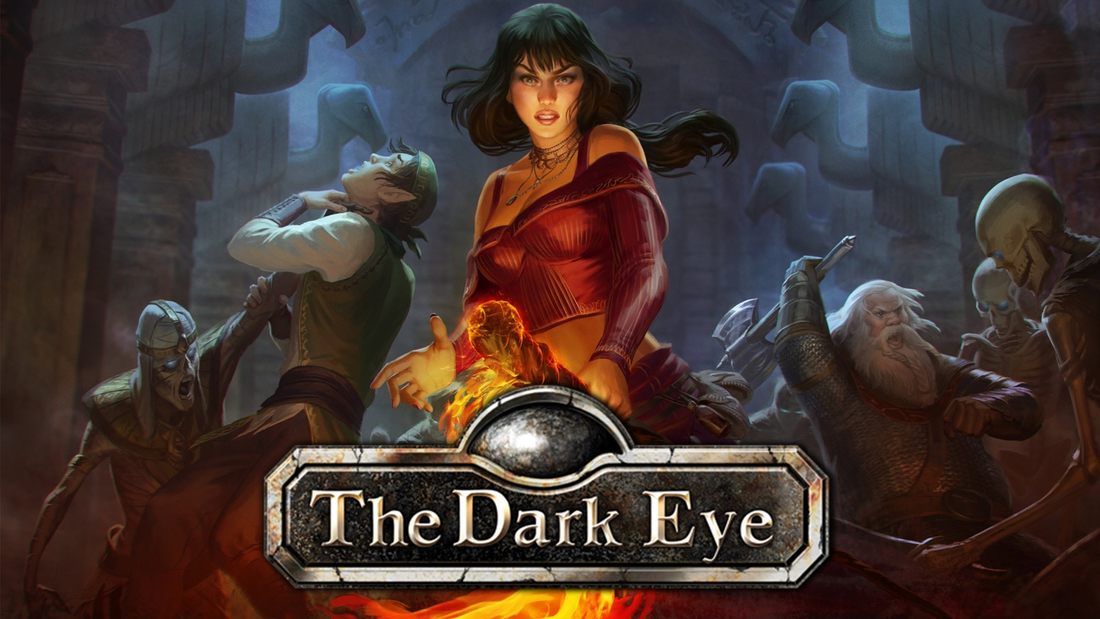 The Dark Eye, also known as Das Schwarze Auge, is a fantasy TRPG from Germany. It’s game that’s been around for quite some time, to the effect of 30 years. As a result, The Dark Eye is as much a phenomenon as Dungeons and Dragons or Shadowrun: there are various novels set in the universe of The Dark Eye, as well as numerous video game adaptations. In recent years, the 5th Edition of The Dark Eye has been published in English. As one might expect out of a game from Germany, it possesses an extraordinary level of detail that would make even the most hardcore Shadowrun players say “Don’t you think that’s a bit excessive, chummer?” There’s pros and cons to everything, though, so let’s take a brief look at what a game of this level of complexity does well! 1) Character Creation Is Open-Ended One of the praises I’ve often heard from fans of Pathfinder and D&D 3.5 is that there’s a lot of options for creating characters. Meanwhile, a related criticism of D&D 5th edition is that there aren’t as many options or as much freedom in that regard. If it’s freedom you’re craving during character creation, The Dark Eye grants it in spades by being a point-buy system. You’re given a certain amount of “Adventure Points” to make your character, with everything about your character costing so many. Though if you’re new to the game or otherwise want the framework of having things like races and classes to pick from during character creation, The Dark Eye provides that as well. To illustrate, every Profession (Class) has a list of different skills it provides, as well as variations that might offer different skills. These Professions (and variations) also have a listed amount of AP associated with it. Thus, a player or GM knowledgeable about how much different skills or abilities cost could make changes to a Profession’s skill list to fine tune it to what they desire! 2) Dice Mechanics Build Off Each Other The Dark Eye has some very robust and detailed sub-systems. This aspect can be daunting at first blush, since it does mean there's a great deal of minutiae that needs to be understood. On the bright side, though, it all builds off of a few recurring rules. At the most basic, you have your attribute roles, which are a simple Roll d20 and see if it’s at or below the attribute in question. Attack and defence rolls in combat follow the same kind of logic, except you’re instead rolling beneath a Combat Ability. Skill rolls are a small step up from that, where each skill has three associated attributes, and you roll a die for each attribute, seeking to meet or go below the attribute in question. Your skill rating comes in by granting you a few points to “nudge” a die in the direction you need, with the more points you have left over at the end granting a better margin of success. As far as spellcasting goes, each spell is treated as an individual skill that requires Arcane Energy every time it’s used, with the amount of skill points left over after rolling for it having a much more significant impact on the end result. All of The Dark Eye’s sub-systems work this way: they build off of something that was previously established. 3) Many Abilities Take Time And Planning The general scale of time in The Dark Eye is much slower; what this means is that there’s a long list of different skills, and many of them are skills that require a great amount of time or some other cost. The core rules include many different sub-systems for creating magic items. All of these can be readily available to starting characters, but also require time and other precious resources such as permanently lowering one’s arcane energy, or finding rare or expensive materials. Mages aren’t alone in this conundrum, however. The heaviest of armors are readily available to new characters as well, but require not only time to put on, in addition to granting three levels of the status “Encumbered,” imposing numerous penalties that would make traveling long distances challenging. 4) Combat REALLY Isn’t Everything (Or Is It?) The Dark Eye does have a fairly robust combat system, complete with all manner of special abilities and other factors that can go into a combat scene. The aspect I believe is most important is this, though: healing doesn’t happen very quickly, to the point where it’s impractical to do so in combat. This makes the stakes of combat much higher, since it’s no longer easy to reverse the effects of being ravaged by cold steel. One could wear heavy armor to make battles safer, but then journeying becomes more perilous. Heavy armor is cumbersome, and makes you more prone to exhaustion! (Both of which cause penalties to all actions that add up.) The end result of these higher stakes is that an adventurer that wants to live will have to be willing to either plan extensively for battle, or seek ways to avoid it. When you consider that player characters don’t necessarily gain experience for every antagonist they slay, fighting to the death stops seeming so alluring. (NPCs share this sentiment as well, since many statblocks in the bestiary indicate that the creature in question would flee if their Life Points fall below fifty percent!) If I were to sum up what the major difference between Dungeons & Dragons and The Dark Eye is, I believe it’d be most meaningful to say that mundane choices and long tasks are given more support in The Dark Eye. Professions in The Dark Eye are more than just how well your character can slay monsters, and most magical spells deal with more mundane tasks than making combat end faster. That isn’t to say you can’t have your monster slaying fun in The Dark Eye. After all, the continent of Aventuria does have a region where the netherworld has begun to bleed through into the world of ordinary people... Aaron der Schaedel has a penchant for games with dense rulebooks. If you looked up Shadowrun on Youtube, you probably found one of his videos on the subject. He’s also hoping you didn’t notice that he forgot to write an end blurb in his last article he wrote for High Level Games. Picture Reference: https://www.kickstarter.com/projects/1216685848/the-dark-eye-rpgenglish-edition 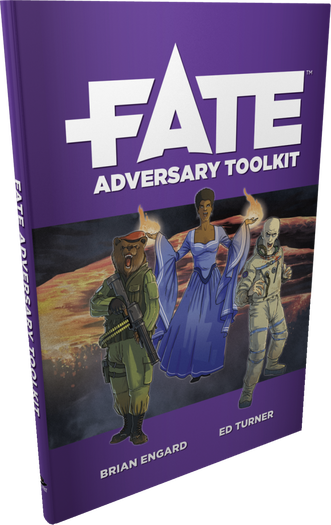 As a Fate enthusiast, I confess: when I heard that Evil Hat was going to publish a Fate Adversary Toolkit in August of this year, I was more than a little excited. It’s not often my five year old son asks me to stop bouncing off the walls. I got my hot little digital copy as soon as I could scrape together the $8 and beg Evil Hat to take my money. Now, though, it’s November; the honeymoon feeling has worn off, and I have to admit that I was disappointed about the purchase. I don’t regret it and I would buy it again in a heartbeat, as you’ll see toward the end of this article. Before you rush off to get your own copy though, here are some words and warnings for the wise spender of eight dollars. 1) Purchasing Problems Now, to be clear, these problems have already been remedied. For the eager gate-crashing purchaser, there was more than one obstacle to overcome, however. First of all, the site’s advertisements were not properly linked to the purchasing page, and there was no “add to cart” option available. That, and Evil Hat has discontinued its international shipping, which is annoying to those of us who do not live in the good old US of A. As a Canadian, I had the option to order from a store in Vancouver. I do not live in Vancouver. In fact, it is more than 1000 kilometers away. The good news? The store offers shipping! The bad news? At the time of release, the store did not have any copies available for purchase. I had checked into it again recently, and all of these complaints have been addressed. I am presently waiting/expecting to receive a hard copy for Christmas. At the time of the roll-out, however, the delay was insufferable because I wanted it right then!! 2) Short On Right-Sizing My greatest criticism of the book is that it fails to deliver on the implied promise of providing enemies that will appropriately challenge groups of different sizes and skill sets. The Fate Core rulebook has guidelines for creating opponents that will match or challenge the skills of individual characters and small groups, so that’s well and good. If you follow the core rules about creating advantages and sharing invocations, however, you can run into some fairly silly situations. I recently played with a group that faced off against a much more powerful foe and, by working together, the group took this big baddie out in one shot (+21 on the Fate ladder is an... “Unpossible”??). What should a GM do to create more challenging opponents for a large group of (four or more) players? How does a single character with a full complement of stunts match up with 20 mooks? Maybe I’ve been spoiled with Dungeons and Dragons challenge ratings, but even a couple of specific strategies to create a challenging encounter for larger groups would have been welcome. 3) NOT A Monster Manual The Adversary Toolkit features 10 nice little mini-adventures that span a wide range of genres, from Regency Romance to Post-Apocalyptic mutants. Each mini-adventure has opponents and sample NPCs embedded within. What it does not have is a list of stats for various monsters, neither mooks nor main NPCs. If that’s what you want, you’re better off looking for fan-made resources, like the Fate Fantasy Creatures site by Inkwell Ideas. This is the second implied promise broken. Granted, given the range of possible genres in Fate, it is impossible to make a comprehensive list of creatures and characters for every genre. It would have been nice, though, to have a list of opponents that goes beyond singular adventures, something for the GM to grab when he’s short on planning time. The one mitigating factor of this problem is that the opponents provided in the mini-adventures could be re-skinned for use in other genres if needed. There are even suggestions for re-skinning included. Nevertheless, that requires more hunting and editing than I was hoping for. 4) Threats & Hitters Now, without unsaying the above criticisms, the book is not a total loss. Hidden in the disappointment, there are a few bright lights. The book suggests the Threat and Hitter character designs, for example. When grouped together or tied to a Main NPC, these supporting characters can flesh out a combat that otherwise might become straightforward or routine. Threats are supporting characters that are meant to be big and scary; they get in the characters’ faces and soak up a lot of damage, while dealing just enough that they can’t be ignored. Think of the big bruiser henchman in a Bond flick: Jaws shows up and gives the main villain just enough time to escape. Hitters are less scary, but more dangerous: a sniper that’s far away, or a ninja master that’s hard to hit but can take players down one at a time. Hitters represent threats to the group that must be dealt with quickly once they’re discovered. Both of these character types add depth and flavour to a combat scene. Perhaps they can be used to challenge a group that has mastered the classic Fate collaborative takedown. 5) Obstacles, Constraints & Environments Obstacles, constraints, and environments are ways to use the Fate Fractal creatively in order to make memorable sessions and scenes. From a mechanical perspective, these three "adversaries” are not easily distinguishable from each other. They are more like variations on a common theme, non-character things designed to get in the way of, and/or do harm to, the PCs. They are details with teeth. Again, by using these guidelines, it might be possible for a GM to split a group’s resources enough so as to create challenging combat scenes that can resist the “dog pile” effect of combining free invocations. The Fate Adversary Toolkit adds another layer to the complexity of Fate Core, which is both a strength and a weakness. Fate’s strength is that the rules remain flexible but robust enough to improvise nearly any situation. Fate Core rides the edge of this balancing act. The rules are simple enough to allow for flexible gameplay, but this works best if a substantial amount of background preparation has already been done. The gamemaster needs to have prepared at least some NPCs and possible scenes in advance for the game to go smoothly. The Adversary Toolkit adds things you can do during background preparation. What it does NOT do is make the preparation work any easier. Landrew is a full-time educator, part-time art enthusiast. He applies his background in literature and fine arts to his favourite hobby (role-playing games) because the market for a background in the Fine Arts is very limited. He writes this blog on company time under a pseudonym. Long live the Corporation! Image Source: Evil Hat Games 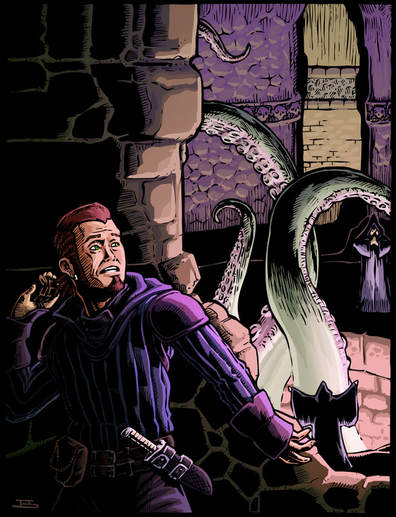 Ah, campaign openings. Where should I start? Providing a solid introduction to your new campaign gives you a foundation from which to build your characters and settings, while simultaneously enrapturing your players and helping them invest in your narrative. There are several ways to do this, and some are more effective than others. I’d like to explore some of the more common methods with the goal of evaluating them for common use. 1) The Tavern Perhaps the most common setting for beginning a campaign, the “tavern” can be any common place where adventurous types might meet up to undertake quests of any stripe. Typically, players are asked to introduce their characters to some degree of familiarity, depending on whether or not the group has been traveling with each other up to that point. This latter notion can present a few problems. If the player characters already know each other, they will have to mutate their individual narratives to fit the group purpose without allowing it to naturally develop during play. If the characters are just meeting each other for the first time, their personalities or desires may chafe to the point that they might not want to travel together at all. Concessions will then need to be made in order to get the story off the ground. Furthermore, this approach can lead to a relatively slow start. Players may get bogged down in the opening overtures and lose interest before their interest can be properly captured. All in all, this method does the job well enough, but it is somewhat overused and can introduce a few problems along the way to the story proper. 2) In Media Res Another popular method for introducing any story is to begin in the midst of the excitement. The player characters might be fleeing from some terrible threat, dropping through a ceiling vent to begin an infiltration, or even in the middle of combat. This approach may be viewed by players as bold, though it too can introduce problems. Without a chance to get their bearings, players may have trouble introducing their characters into the narrative, instead focusing on solving a challenge instead of playing their role. There may also arise some confusion regarding the setting or narrative. If you start too fast, especially with newer players, you could have more than your fair share of system issues come up. All that being said, this method tends to be intriguing enough to help players overlook most problems and get into the fun of gaming and shared storytelling. My advice for those looking to try this is simply to be prepared to stop occasionally and answer questions to keep players grounded in the narrative. 3) The Flashback Instead of opening with action or a static setting, GMs can introduce their game by opening briefly in the present, then flashing back to a critical point in the narrative. Perhaps we revert to the scene when the characters meet one another, or when they meet the big bad. This method can be effective when starting new arcs of a campaign as well. The major problem that might arise with this opening style is the issue of information overload. Players already have to deal with how their new characters are handling the present situation (whatever that might be), but now they have to answer the question of how their character will act in a different time setting as well. Unless they’re properly prepared, players may balk at this method. Nevertheless, this can prove an intriguing and perhaps novel method of campaign introduction, especially if used for player characters that have already survived a previous campaign together. 4) Individual Preludes This idea I’ve gleaned from White Wolf games, but it could function conceivably in any RPG or setting. It requires the most time and effort of the methods listed here, as GMs must sit with each player individually and run a solo session of some length and description that explores their character’s story prior to the campaign proper. Therefore, this functions best when used in conjunction with other methods, and for campaigns that you plan on running for a good amount of time. Too much setup can be a negative for shorter games, after all. You’ll still have to decide how you want to start your first joint session, but a lot of the individual character growth and development will be behind you, allowing you to focus on bringing these disparate player characters together in purpose. When I use this method, I often ask players to go a step further and prepare a short backstory for their character so we can really delve deep into the roleplaying aspect of the game. You can expand this even further by running multiple sessions with individual characters or groups of two, forging character traits more naturally before bringing the group together and forcing cooperation to some degree. Admittedly, this would take an extremely dedicated GM with a considerable amount of free time. The benefits of such an endeavor could outweigh the costs, but I haven’t tried it yet! Most often, I find myself using a combination of methods to create a captivating yet practical campaign introduction. My experiments don’t always work out perfectly, but they certainly mix things up for my players, which typically presents value regardless. I’d encourage you to try a few of these methods or some concoction of several, or come up with your own methods and let me know about them. As GMs, we’re always trying to find ways to combat complacency and fight for our players’ attentions, especially in the age of the cell phone. Share your secrets! David Horwitz is a gamer and freelance writer with an obsession for exploring new forms of leisure. If you’re looking for an inquisitive mind and a deft hand, or just want to chat about gaming, contact him at www.davidhorwitzwrites.com/contact . Image is courtesy of JESHIELDS: https://www.patreon.com/jeshields/posts  One of the most challenging villains in fiction is the mastermind. Knowing that they’re way smarter than you out of the gate creates more of a challenge than just the high hit points or armor of a big tough guy. They always seem one step ahead and often become a long-running nemesis. I started thinking about this again when watching an episode of the latest season of Longmire on Netflix. (Spoilers ahead!) Chance Gilbert is the leader of a “family” of violent, anti-government extremists. He cloaks his words in the rhetoric of liberty and freedom while arming to the teeth and being willing to kill to get his way. His murder of a census worker sent him down a path of conflict with Sheriff Longmire. Chance is highly intelligent, charismatic to the right audience, and well-educated. He uses grey areas, cracks in existing laws, and nebulous arguments citing the founding fathers to resist paying taxes and obeying laws. In the TV series, he kidnaps one of Longmire’s deputies and tortures her. He is captured but masterminds his own escape leading to a manhunt and final showdown with the Sheriff. Studying the Chance Gilbert example and reflecting on other examples in popular culture, I wanted to highlight the keys to a challenging mastermind villain. 1) Always Three Steps Ahead Chasing a mastermind should be very frustrating. Their plans are complex and seem to cover every contingency. Heroes can end up running as fast as they can to find themselves just short of capturing the mastermind, saving the victim, or recovering the stolen object. Each failure of our heroes along this path should be a body blow, not a knockout. They need to feel bested but not defeated. The mastermind can strike at their weak spot, their secret vulnerabilities, yet always leave them wounded but alive. For example, a threatening message or even a bombing could reveal that the mastermind knows about their ultra-secret base, revealing a vulnerability. There are several good examples of this in the Longmire-Gilbert plot line. Gilbert makes his original escape from custody using a gun wrapped in plastic hidden in a toilet tank along with civilian clothes stashed nearby. It took careful planning and the manipulation of helpers to set that up. When Gilbert is on the run from the courthouse, he dons a gas mask and tuxedo as a disguise. When the Sheriff follows him around a corner, Longmire finds dozens of people standing around in his exact outfit wearing gas masks; a perfect distraction while Gilbert gets away. The decoy people are oblivious to what is really going on. They had just answered a Craigslist ad with strange requirements that promised them a lucrative opportunity. The mastermind also gains advantage by perverting assumptions. A prison guard who is assumed to be doing his duty is actually aiding Gilbert by stashing the clothing, gas mask, and pistol. If the mastermind can get enough leverage through knowledge or lies, they can turn all manner of law-abiding citizens into witting or unwitting allies. Even our heroes can be twisted if the mastermind can put them in a paradoxical position. The hero has to perform a criminal act to benefit the mastermind in order to save a captured ally or keep a sensitive matter secret. Of course, once the hero does this, the mastermind is sure to capture evidence (video) of the hero aiding him as further leverage next time. Often the hero must face personal loss (bodily harm, loss of reputation/job/standing) by resisting this leverage and making certain they capture the mastermind. 2) The Rare Error of Detail Investigating a mastermind should be pretty frustrating as they are very detail-oriented and have planned for players’ expected reactions. Still the mastermind needs to work with others to execute their plans, and those others are prone to making little mistakes. These little errors are the sort that get an investigator hero’s radar up, teasing that something is wrong without pointing it out directly. In Longmire, Gilbert requires the aid of a prison guard to make his escape work. The guard is supposed to let him use the men’s room to change from his courtroom clothes back to his prison jumpsuit and sends him into a narrow stall. Later, Longmire asks the guard why he didn’t put him in the handicapped stall which was much roomier. This was enough to get the guard to start to crack and then give up what he knew of the plan (which mostly explained what already happened and not much of what was coming next). If the heroes can detect some seemingly minor variation of procedure, they can follow that thread to uncover what happened. Since few of us are current or former law enforcement agents, I would suggest that Gamemasters allow any officer of the law a roll to see if they think the other officers performed correctly. 3) Fatal Flaws If a mastermind has no flaws, they are essentially unbeatable which is not fun for anyone. The real way to take down a mastermind is by taking advantage of their weakness instead of struggling with their strength. If their plans are unbeatable, change the game. Tempt them with something that they obsess over, something that will get them to act without all the careful planning. A typical fatal flaw for a mastermind is their arrogance born of belief in their own massive intellect. They can be played by flattering that arrogance or potentially by challenging it, goading them into a style of conflict that favors our heroes or even just distracts them long enough for backup to arrive. In Longmire, Chance Gilbert becomes obsessed with Deputy Vic Morelli. He tortures her in an early episode but ends up getting arrested. This gives her PTSD and a lingering fear of him. He blames his failure all on her and makes elaborate plans to terrorize and kill her once he escapes. His family writes scary messages on the side of her home and lurks around the hospital as she recovers from surgery. This obsession makes his moves more predictable and forces him to act from emotion instead of logic. Masterminds can be one of the most challenging villains to create for a Gamemaster but they can also be one of the most satisfying enemies for your players to eventually defeat. There's nothing like watching the bad guy get away time and again to amp up the players' desires to get him at last. I hope these ideas help you introduce a mastermind in your next game. Jim founded Dragonlaird Gaming Studios in 2005 as a channel for his original tabletop RPG work. He’s an accomplished freelance writer with Knights of the Dinner Table Magazine (as a columnist) from Kenzerco, Margaret Weis Productions (Serenity, Battlestar Galactica, Cortex), and many others. He published Savage Characters Volume 1 a couple years ago and has plans to release a series of Savage Adventures soon. You can find his website at www.dragonlairdgaming.com. Picture Reference: https://www.criminalelement.com/blogs/2014/07/longmire-season-3-episode-7-population-25-calls-for-help-craig-johnson-wyoming-edward-a-grainger 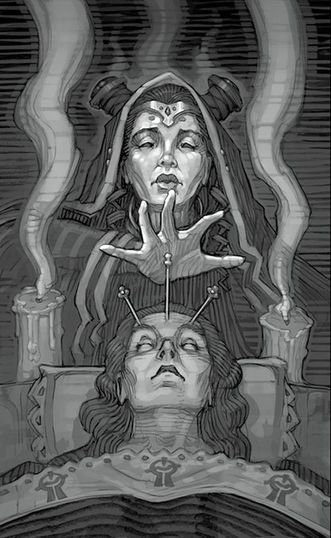 Any players worth their dice know to fear offending the Vistani, lest they be stricken with some unspeakable curse, but the gypsy-folk are not the only ones who can invoke their wrath. Just as Ravenloft games keep players on their toes with vampires immune to garlic and mirrors, or lycanthropes immune to silver, players should never become too confident in their expectation that being nice to the Vistani--or anyone else--is a guarantee against being cursed. If your plot calls for a PC to be cursed but they are on their best behavior for all the usual suspects, you might want to review some of these less usual alternatives. 1) No Good Deed Goes Unpunished Ravenloft is known for moral quandaries, and sometimes getting cursed is the result of doing the right thing: The Evil Eye has an example of this. In addition, because justification is measured from the invoker’s point of view, an evil or deceived invoker might feel wronged for all sorts of reasons. In the epic-level Reckonings campaign, a charismatic PC encouraged an abused daughter to stand up to her mother and leave, and the mother felt highly justified in the Dangerous curse she invoked on him in response. 2) Midnight Cat These supernatural felines had a +15 to curse checks in 3E. Some DM’s would temper that to avoid upstaging the Vistani, but it's also possible that the cats are so rare, so solitary, and so stealthy that their curses haven’t earned a reputation yet. With such a bonus, a Midnight Cat could toss out unjustified curses at will with a reasonable chance of one sticking, no matter how frivolous. Heaven help the poor party who actually does something to offend the creature. Of course, Midnight Cats can also remove curses, but their price for doing so may require a Powers check. 3) The Wishing Imp As the song goes, “There is no curse or evil spell...that’s worse than one we give ourselves.” This truism at the heart of Ravenloft Powers Checks is also known by those who have once possessed the infamous Wishing Imp, a diabolical figurine that grants twisted wishes. The difference between a twisted wish and a curse is mostly a matter of perspective, but it's even possible a wish could be granted in the form of a literal curse, such as a character wishing for prowess in unarmed combat and becoming infected with lycanthropy. 4) The Ancient Dead Ancient Dead (mummies) with the Curse of Vengeance salient ability add their rank +4 to curse checks. Between that and their bonus to charisma, a powerful mummy could rival the Vistani for laying curses. In addition, the single minded passion that drives their unlife, combined with any unusual customs of their culture of origin, makes it possible for them to justify curses for unexpected things (see #1). 5) Alchemical Purgative From Van Richten’s Arsenal, spiritual purgatives expel the affliction from the body, but the effect is temporary unless another takes up the burden. While a few selfless souls will knowingly take a curse for someone they love or to spare an innocent, (see below) most uses of this purgative involve a hapless victim duped or even forced to ingest the purgative before the time limit expires. PCs should beware bets or dares to eat or drink anything, especially if the other person seems to be in a hurry. 6) Expiation One 2nd edition alternative to paladins in Ravenloft was the paragon, a pure soul reborn over endless generations to fight the forces of darkness. One of their powers was “expiation,” the ability to temporarily absorb curses. This allowed the paragon to absorb a curse temporarily, either to give a little respite or to endure some rigorous cleansing process that the original victim might not have survived. Alternately, some religious group might have an expiation ritual that could work for other volunteers, allowing any PC to stand proxy for someone less fortunate, only to remain cursed when the cleansing portion of the ritual goes awry. 7) Flask Of Curses In a land like Ravenloft, we often forget about items like this from the original DMG, whose powers are enhanced in the Demiplane of Dread. Not only does it not matter whether the curse is justified, but these flasks can release any magnitude of curse, even the Lethal kind that could permanently change someone into an undead or other monster. Of course, this works best if the flask is a unique item with a history that explains its accursed nature and provides a theme for the curses. 8) Deity The Unspoken Pact that distances clerics from their gods does not prevent every expression of divine supernatural power. A PC who violates religious tenets or desecrates holy ground may pass the Powers check, but there may yet be divine consequences. Touch of Death has an example of a powerful divine curse for grave robbing from the Akiri: aging one day per year, with lifespan unchanged. Curses come in all shapes and sizes, from embarrassing to lethal, mildly humorous to eternally torturous. Having ways to inflict or remove curses in unusual ways allows them to be used more creatively, adding depth and drama to your gameplay and explore hidden parts of the world’s mythology. Your players may not actually thank you for cursing their characters, but they should still have a good time fighting against the darkness, and that’s what Ravenloft is all about. Leyshon Campbell has been playing and writing for Ravenloft for over twenty years, from the Kargatane's Book of S series, playtesting D&D 3E in a Ravenloft campaign, to the ill-fated Masque of the Jade Horror. He married his wife on Friday the 13th after proposing to her on Halloween. By tradition, the first story read at birth to each of their three children was The Barker’s Tour, from Ravenloft’s “Carnival” supplement. Picture Reference: https://www.pinterest.se/pin/560205641129076605/ 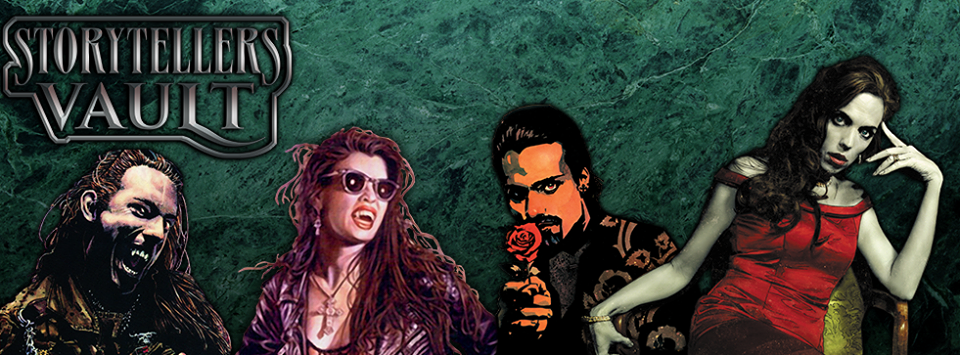 This summer White Wolf released a community content creation website called The Storytellers Vault. The ST Vault is much like the DMs Guild for Dungeons and Dragons. You can create content for the World of Darkness (currently just Vampire: The Masquerade and Dark Ages: Vampire). White Wolf keeps 50% of the revenue and you, the creator, receive the other 50%. High quality templates are provided for Word and Adobe InDesign. Further, White Wolf has dozens of images that have appeared in older books for you to use for free. This gives you all the resources you could need to create the next great World of Darkness product. 1) New City Book Most Storytellers end up creating their own cities in the WoD at some point or another. You might have roughly sketched these out, or, like some of us, you might have detailed notes that take up entire folders on your bookshelf. You’ve created important locations, you’ve detailed changes between your real city and the WoD reflection. NPCs live within your imagination and the imaginations of your players.Take all of this material and turn it into a coherent product. Detail those NPCs and their reasons for making your city their domain. Write down the backstory for your Prince or Archbishop, draft character descriptions and roleplaying hints. If you have a game that your players have raved about, even years later, take that material and turn it into a product. There is nothing that says we cannot have a dozen Austin By Nights, all with different characters and stories. If you’ve created it, put it to use and get paid a little bit at the same time. My recommendation is to use InDesign for your layout. This will make your book look much more professional. Examples from The Vault: Buffalo By Night, Missoula By Night, Rose City By Night, Denmark By Night, Seasons of Fear: Mont St. Michel By Night 2) Bloodlines Or Clan Books Have you created a detailed bloodline for a chronicle? Why not write them up into a full Bloodline book? Over the years I’ve heard of dozens of personalized bloodlines created by players and Storytellers for the classic WoD. It can’t hurt to collect the lore you’ve developed, the disciplines you’ve designed and make a product that showcases them. Keep in mind, it can’t hurt to pay someone to do an editing pass. Your product will be better if you do so. Please email us at [email protected] if you are interested in our editing and layout rates. We’re happy to help take your product to the next level. Examples from The Vault: Clanbook Nahema, Clanbook Lungo Drom, Clanbook Jiang-Chi, Clanbook Bilquis 3) Chronicle Guidelines Or Jumpstarts Sometimes you need a hook to create your own story from. Reading through city books or clanbooks can be great for this, but sometimes you need something more. We suggest using a short Chronicle Jumpstart, a story that allows you to branch out into more in-depth chronicle ideas. The key for these is to not have them be too much like a fantasy RPG module. You want to provide a Storyteller the tools to launch a deeper chronicle. Give them a political hook, a mystery, or a shocking revelation that drives the players and their characters to dig deeper. Keep in mind when creating something like this to give the ST wiggle room to create elements that work best for them and their players. Don’t make a scene by scene set of commandments, provide a framework and options, and allow the ST to connect those options in a way that is fun and engaging. Examples include: Dark New England Chronicle Jumpstarts, Monastery of Metamorphosis, Things Go Southy, The Curse Pole, A Singular Darkness, The Templar’s Childe, Obelisk of Oak Island, Contagion: The Berlin Chronicles, New Blood 4) Novels You’re a fan-fiction writer; trust me, there is nothing wrong with that. Fan-Fiction is an awesome way to teach oneself how to write. It allows you to learn how to match tone, content, and style. Then you can branch out and define those things for yourself. The ST vault allows you to write novels for World of Darkness. So, if you’ve got some form of dark horror Vampire story hiding in your brain or on your computer, put it together and sell it! The Vault allows you to submit works in any language, and my advice is to write in your native language or work with an editor and translator. Examples: A Golconda Story, My Dreams in Ceoris, The Modern Nights, As Mil Faces da Malkaviana, 5) Yeah, I Could Use That Maybe you have an idea for something useful that doesn’t quite fit into the other categories? Like a collection of plot hooks. Someone wrote that. Or an armory of weapons to use for your game. There are discipline lists for Elders and for combination disciplines. There are stock images and various other random things that others might find useful. If you have something that you find useful for our campaign, it can’t hurt to put it together in a pdf and share it with others. Try and price things in a way that are actually worth the amount of work you’ve put into them. Examples: Combination Disciplines, Elder Disciplines, Pictures for Projects, Hunter’s Armory, Logos, There are dozens of options for ways you to put your creativity to work over at the Vault. I recommend digging into it and seeing what sort of things you can find that interest you, and of course what provides you inspiration to create some awesome things as well. Josh is the intrepid Chief Operations Officer of High Level Games. With 19 years of playing rpgs, Josh started with Mind's Eye Theater LARPs and loves the World of Darkness. He runs, www.keepontheheathlands.com to support his gaming projects. Josh is the administrator of the Inclusive Gaming Network on Facebook. He’s preparing a Changing Breeds game. He’s a serious advocate for inclusive gaming spaces, a father, and a graduate from the International Peace and Conflict Resolution graduate program at American University in Washington, D.C. You can also find Josh’s other published adventures here and here. Image owned by White Wolf for use in the ST Vault. 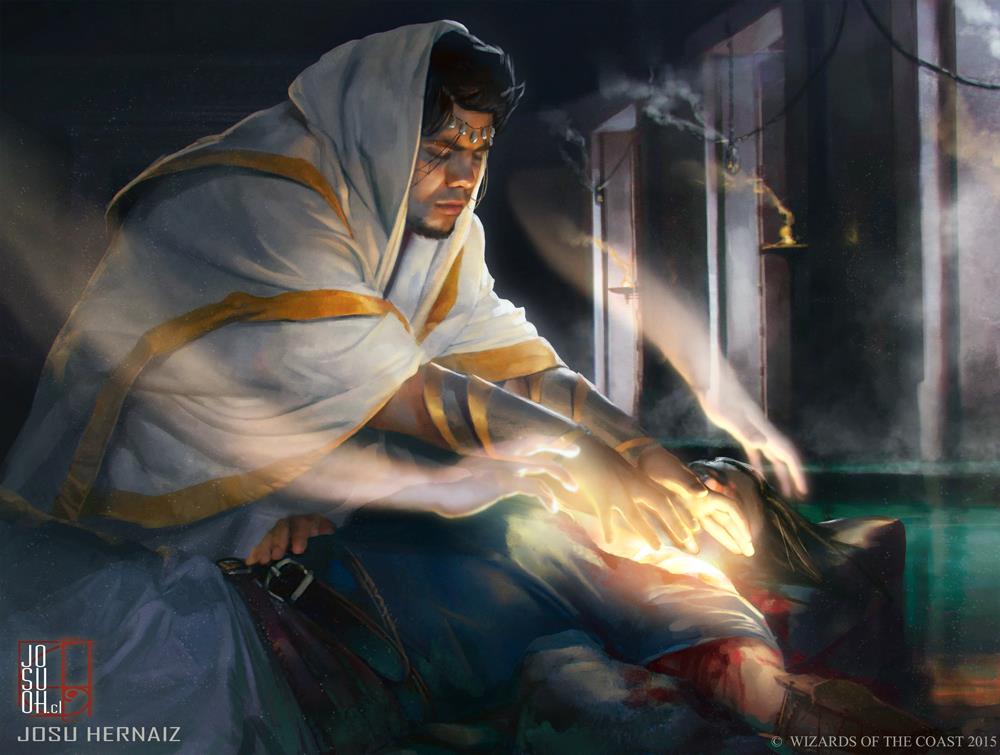 Before I go into this, I want to say that I am in no way shape or form a professional in mental health or counselor. I am just a person who battles depression. I also want to say I am okay, in case someone were to worry about my well-being. This article is very personal and took a lot of courage for me to talk about. This is for those who are afraid to to talk about it. The numbness felt like a bottomless pit that would pull me in deeper every time I climbed a few feet. I got to the point of pure despair and the only way out seemed to be the permanent solution. Then my father and uncle introduced me to Dungeons and Dragons. After a few sessions, I realized how much this game allowed me to get breathing room. It helped me to start climbing out of the pit. Let me share a few reasons why roleplaying in general has saved my life and helped me battle my ultimate evil. 1) Friends Once a week, my friends and I get together to play 13th age. I also play another game every other week with the Heavy Metal GM. It is a guaranteed day out of the week for me not to be alone. When I am at the table with friends, they distract me from the pit. They make me smile, laugh, and allow me to feel human. Genuine emotions come out of me when I am with them. I feel alive when I am with friends. As dungeon master of my Tuesday game, nothing makes me happier than seeing them have a good time. I am really thankful for the support they give me, for the fact they that can dedicate four hours to hang out. Thanks guys, if you're reading this. For me, being alone just doesn't help. Being surrounded by people who care has made a huge difference in my life, my friends really make life worth living. 2) A Break From Reality Sometimes taking a break from the real world can be helpful. Being a character from a different world is a nice way to escape my own thoughts. Part of my depression is that I have become an expert in separating myself. What I mean by this is that I have a better understanding of my own emotions and separating myself from them is easier for me. In turn it has helped me get into character, allowing me to understand the thoughts, motives and emotions of the character. I get to be this amazing hero that mostly everyone adores. Most of the characters I play are parts of me put into a different situation than my real one. The character I currently play is Crysx Silverleaf, who has an identity problem. He is struggling to find who he is and who he’s meant to be. I often suffer from the same feeling, and playing it out in game helps me find new ways to approach different situations, process emotions and how to comfort myself within. Crysx is also terrified of the dark and what lurks within it. He’s scared of the darkness because of his own problems he had growing up; treating the darkness like a villain he had to overcome. It’s like this overwhelming thing I can't put my fingers around and beat with just my hands. The form the darkness takes is the villain. This is like an imagined version of my depression for me. It's a nice break from reality when I can be someone who can actually fight the villain. I really got to thinking about this when the villain knew I was afraid of him so he dominated my mind, making me fight my friends. Depression can do a lot of things to an individual, sometimes it can take you over before you can do anything to prevent it. It’s beyond enjoyable for me to be somewhere away from my real problems. I’m not sure if it's the artistic side of me, but I can embed myself in my character's shoes so easily. Maybe it's my subconscious telling that escaping reality for a bit is how to keep mental stability in check. 3) Looking Forward I don't tend to look forward to things. Letting myself down, which happens more than I would like to admit, really drags me down into the pit. I have these aspirations that are seemingly impossible to achieve. This hobby gives me a sense of purpose. Instead of being nagged by the wonder and worry of what I am doing with my life, I get to write these articles and produce a podcast. It’s not the only thing that helps me get through the week, but it has had a large positive impact on my life. I’ve met good people, formed stronger bonds with friends, and found a more positive outlook in life. I also want to dedicate this section to HLG, for giving me an opportunity to talk about all the cool things I like with other people. I look forward to writing these articles because of the community, excitement I feel when I get one like or a comment on my posts. It makes me happy. It has been extremely nice to finally have something to look forward to, even when I am pretty deep in the pit. I keep pushing myself because this is a hobby that makes me happy and I don't want to lose hold of it. Just to stress it: I am not a mental health expert in anyway. I want people to know, who are suffering, that it's ok to reach out and talk to someone. This community has some of the nicest and most honest people I have ever talked to. It takes a lot of courage to talk about your weaknesses; don't let it beat you. You're the hero of the story, so get out there and kick some ass. With lots of love, stay nerdy. Benjamin Witunsky, artist, writer and nerd savant. Cofounder of the NerdMantle Podcast available on Soundcloud, Itunes and Google Play Music. Picture Reference: http://www.artofmtg.com/art/healing-hands/  Trying out a roleplaying game for the first time is one of the most daunting tasks in the tabletop gaming world. Even if there were no rules attached to the game new players would be in over their head. These are five pieces of information that are beneficial to share with new players when they sit down at the table for the first time. 1) You Are Going To Make Mistakes And you know what? That’s okay. Your first few sessions shouldn’t be about playing perfectly. I’d argue that roleplaying games aren’t about playing perfectly, however there is a lot of pressure for a new player because they’ll be sitting around a table with a bunch of players who look like pros in comparisons. If there’s dice you might not know which is which. The DM might ask you to do something and you won’t have any idea what they are talking about. You might try and use a spell or an ability completely wrong and everyone will look at you (after an awkward pause) and say, “that’s not how that works.” Any of those things in the moment might seem like horrible missteps that ruin the mood of the table but they are not. They are necessary to learning the game. 2) Don’t Worry Too Much About The Roleplaying Getting into your character and immersing yourself completely into the world is one of the best parts of a roleplaying game. However when you’re just starting out the rules are daunting enough. Trying to balance staying in character while also attempting to understand all the complex terms can be quite mentally demanding. Instead use your first few sessions to get a feel for how the game works and where you fit into it. Roleplaying is one of the hardest parts of getting comfortable with any RPG. It takes a lot of time to learn how to separate yourself from the game mechanics. It is an important part of the game, but it should be one of the last pieces you focus on when you’re just starting out. 3) There’s A Lot Of Rules, But It’s Not Your Job To Know Them Unless you’re learning a game for the first time as a DM (which is a whole other article), there are a lot of rules that you don’t need to know. You’ll want to learn how certain mechanics-- like combat-- work, but even then you don’t need to know the rules from top to bottom. Don’t be surprised if you ask how certain aspects work and the players tell you to watch a few rounds and then join in when you feel comfortable. Roleplaying games seem quite rigid in their structure, but in reality they all flow freely. Players will get comfortable around the table with one another and it becomes more about storytelling than it does about being a mechanically strict game. Of course none of this means rules can be explicitly broken; where’s the fun in that? 4) Don’t Be Afraid To Try As you start to get more comfortable in the game you’re playing, ideas will pop into your head for what you want your character to do. They may seem ridiculous, they may seem out of place, and they may seem completely different from how you’ve been playing so far. Now matter how it feels, if the inspiration is there you should follow through with that inspiration. There’s a turning point for any player. It’s when they realize they love the game or they don’t. It usually hinges on the moment where they get that desire to do something to actually impact the game. You should impact the game, that’s your job as a player in a roleplaying game. Following through with these impulses will open doors for you, completely entering your character and immersing yourself in the game. However with that said... 5) Don’t Do Things Just Because You Can The magic of a roleplaying game is that nearly anything can happen. If a city guard is talking down to you and you don’t like it, you can uppercut him off a bridge. As in life, your in-character actions have consequences. Sure, you uppercutted a guard off a bridge: now you are wanted by the city military and you need to go into hiding. As this was happening another player had a very important meeting with a high profile merchant, but because they were seen with you they are also on the wanted list. The entire party now needs to go into hiding, closing off the entire city and its resources. A good DM can roll with chaos, but it doesn’t mean that you need to go causing it just because you can. Roleplaying is very much a group activity and there’s nothing that ruins the mood more than one player testing the limits and seeing how far they can go without breaking the game. Be considerate of other players and even ask them, out of character and out of game, if this is a line that is too ridiculous to follow. There’s a lot to learn when you first dive into a roleplaying game. These five pieces of advice can be helpful for any new player who wants to know what they should and shouldn’t focus on for their first few games. With a supportive DM and a supportive group of players, almost anyone can find a fit at a roleplaying table. It just takes a lot of trial and error and the understanding that mistakes happen and it’s impossible to do everything right. Focus on having fun and understanding your character, the rules will follow. Any other tips you share with new players at your table? Let me know in the comments or tweet at me directly on Twitter! Justin Cauti is a writer and Twitch streamer. He plays board/roleplaying games on the internet at http://www.playingboardgames.tv. Follow him on Twitter for updates on his boring life and writing projects @LeftSideJustin. Picture Reference: http://www.nerdsourced.com/get-friends-play-dd/  We’re all nerds here, right? While we all may fly nerd flags, everyone’s nerd-dom is a little bit different. The books, shows, games, movies, and fandoms which comprise our little kingdoms of nerdiness can vary greatly from person to person; and that’s awesome! But what happens when you need to fit into a foreign fandom? This is currently happening to me. My nerd tapestry is woven with the strands of many fandoms, predominantly fantasy in nature (LotR, DnD, Redwall, Elder Scrolls), though with a few sci-fi (Star Wars, Mass Effect) mixed in for color. I have recently begun playing in HLG’s live-streamed Star Trek Adventures. Prior to the campaign, I had not seen a single Star Trek episode, of any series (gasp! shock!); I saw the first of the movie reboots in college, but even I knew that wasn’t right. Suddenly being dropped into a fandom older than I am with no more than the most basic of knowledge is a harrowing experience. For example, the extent of my Star Trek knowledge was that there was a character named Spock, the term ‘Kobayashi Maru’ meant something Trekky, and I knew how to do a Vulcan salute, though, full disclosure, I had to search google for ‘Star Trek hand sign’ to assign it the proper name. As an adult with a family and a job, I just don’t have the time to catch up on all the content that I’ve missed, but at the same time I want to play this awesome game with my group. What was a fella to do? 1) Hit The Highlights My game group was aware of my STD (Star Trek Deficiency) when we were planning the campaign. They put together a list of the ten most important episodes that I should see to get a sense of the world in which I was going to be playing. While I still feel like a noob when we’re playing, those episodes laid a good ground work in the source material so that I can at least function within the universe (I now know what the Prime Directive is! Go me!). You don’t need to know every detail about the foreign fandom, just enough to get you going. 2) Minimize The Knowledge Deficiency One way of limiting the issues caused by my STD was to create a character who was more punchy than thinky. It doesn’t matter what universe you are in, a punch to the face is still a punch to the face, be it orc or Klingon. Had I created a character with a greater emphasis in knowledge, history, or politics, I would have had many more issues, having to learn these things before I’d be able to effectively communicate them in-game. You should take steps to keep yourself out of positions where your lack of knowledge is easily perceived. 3) Ask A Lot Of Questions We nerds love our fandoms. We also love sharing the ridiculous amount of information we have about our fandoms with anyone interested (or just willing to listen). If you are involved in a fandom that’s not your own, everyone in that fandom wants you to be there! Another person with which to share in the wonderful experience that is (insert fandom here)! If you ask, and I speak from experience here, you’ll often get more information than you were looking for. You’ll receive too much, more than you are interested in, or, quite frankly, even deserve; but there’s no better way to learn. 4) Buzzwords And Catchphrases To really feel like a part of the group, you need to speak like them. Every fandom has lingo associated with it. It’s important to learn it and use it, even if you’re not 100% sure if you’re pronouncing words correctly or using them in the correct context. I think the phrase “fake it ‘til you make it” is appropriate here. In addition to sounding awesome, something that I’ve found is that you learn about the source material unintentionally while you’re learning the lingo. 5) Wikis Are Your Best Friend While your friends may be a seemingly endless source of knowledge about their fandoms, the internet is an even better source, which you can more readily shut up if you ever have enough. There is a Wiki for every conceivable fandom out there that can provide all the information (and speculation) about a topic that exists. This is one of the situations where going down the rabbit hole of links that the internet often takes you down can actually be a good thing. The thread can lead to all sorts of interesting, and sometimes disturbing, information about your fandom. For example, I found myself reading all about Denobulan mating rituals, something I did not know about; which I apparently needed to know, which I now know. Dive into those new fandoms without fear and enjoy yourself! May you live long and prosper. (I’m fitting in!!) Jake is now a huge fan of Star Trek and will be working to lessen his STD by watching all the original Star Trek episodes (albeit eventually). Picture Refrence: https://repsub13.wordpress.com/2013/10/01/stark-trek-fandom-the-federation-alliance-of-misfits/ 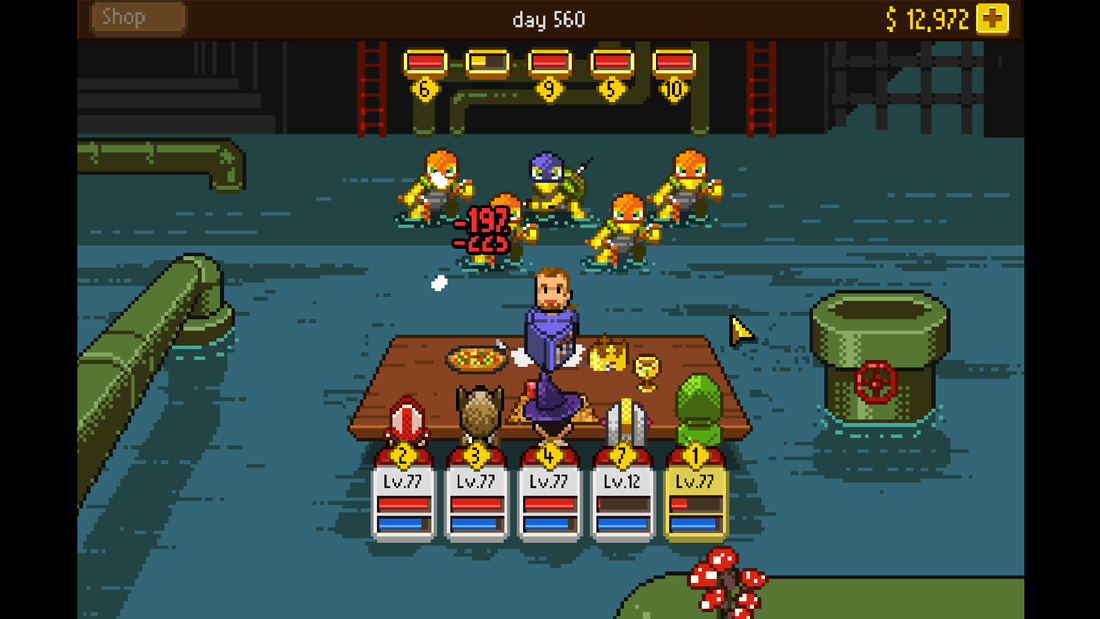 The backbone of every game- regardless of the medium- is the mechanics behind it. Some mechanics, like Shadow of Mordor's nemesis system, may have been very interesting in a virtual environment, however prove effectively moot in the tabletop world, as the GM would obviously remember the occurrences much better than a system would. However, other mechanics, similar to Bioshock’s plasmids and the tonics that came along with them, would simply flourish in a tabletop environment. Hell, an entire class, maybe even a whole system, could be dedicated to Bioshocks superhero-esque plasmids. There are literally dozens of games out there that could have entrancing and exciting overlaps. 1) The Elder Scrolls IV: Oblivion The Elder Scrolls series may not have a whole lot of mechanics that would fit cleanly into a lot of RPG’s. However, the beauty of fantasy worlds is that as long as there's magic, there will almost always be some overlap. In Oblivion, once you complete a little bit of the tutorial, you get to make a rather interesting choice: your birth sign, which grants you a passive or active ability. This concept could be implemented very easily in any game system that has magic. You could, of course make up your own constellations or, depending on the game, use the ones provided. Using the real world zodiacs could be incredibly versatile. A rogue born under the sign of the Libra could have the ability to bend luck in his favour, in exchange for bad luck later (the GM would obviously choose when to affect the player with this) or a warrior born under Aries could receive an extra action per day in combat. You could perhaps even force the players to roll randomly for their birth and giving them a sign that may or may not blend well with the class they have. Taking the Chinese Zodiac would be just as interesting. Someone born in the Year of the Snake could get a bonus to deception checks. Being born in the Year of the Dragon could make you better at persuasion. Those born in the Year of the Pig may just be better at coming across money. Personally, I would say that typically passive bonuses would be better for an RPG setting and that if you chose to give the player an active ability, it should probably be a once per day thing. In Oblivion many of the abilities are actually rather powerful with a prominent detriment, such as the ability to regenerate health at the cost of being weak to fire damage. While a system with bonuses and detriments would work very nicely, having some sort of weakness or handicap at level one could be a character killer, depending on the system. 2) Infamous If you’re unfamiliar with this PlayStation exclusive, you may or may not have been living under a rock. But that's beside the point. In Infamous, you have powers that are enhanced by your choices via their Karma System. When you do “good” things you get “good” karma, and vice versa. Now, the interesting portion of this system is when you introduce the powers. When you lean further into one of the two karmic paths, you are allowed to unlock powers that are specially made for that path, typically with the good path being focused on self-healing and the evil path being built around the concept of “big boom fast no take damage.” In games which your alignment is a solid and important choice, this could work out very well, as your alignment would affect your abilities and functionality. For example, a lawful neutral wizard could be able to prepare an extra spell per day. A chaotic evil fighter could choose to do a significant portion of extra damage in exchange for taking a little damage themselves. Neutral good bards could have a bonus for their buffs and healing spells. Really, the doors that are open for this (in a world with more options than “good” and “evil” doing the most stereotypical “good” and “evil” things ever) are quite astonishing when you take everything into account. Not that it wouldn’t be a lot of work. * *Only because I got a little bored while writing this, I've decided to calculate out exactly how many possibilities there are for this. Assuming one power for every combo (I.E. One power per alignment for every class. So 9 alignment powers for a fighter.) we have 9*12 when using D&D as our basis. Which already leaves us at 108, arguably a whole crap ton of legwork. But, if we include all the races and have individual powers depending on race, class, and alignment, (i.e. A LG dwarven fighter would have a different power than a LG elven fighter) then we have to go 9*9*12, which brings our new total up to 972 individual power changes. That's not including Volos Guide races. Which, including the monstrous races would bump this number up to 1404 individual race and alignment based powers per class. Now, let’s drop the race thing and focus on if you adjusted each ability slightly depending on alignment. We’ll assume 5 different adjustments. So 5*9*12. Which comes out to 540 separate changes. Let’s face it, 5 adjustments would probably be lowballing it. But still, you can see why this idea would be a little bit of work if you were going to fully map everything out. 3) Dark Souls I can hear the masses screaming already. “Oh god, what mechanic from those godforsaken, tough as nails games could this sadist possibly think would fit into a tabletop game?” Well, I’ll have you know that this is a skill game, and there's not a whole lot that would apply in a tabletop setting. However, they do have a bit of overlap and I think that Dark Souls ideas on the subject would make for an interesting game. And that subject is currency and experience. In case you are unfamiliar with the Souls format, in the game, you get these things called “Souls” (shocking I know) but they function as both the primary currency and the experience for the game. So you can choose between buying that sick piece of armour or jumping three levels after beating that boss. Obviously, this would require leveling and price adjusting on the part of the GM in most settings, but the dynamic between players who choose to focus on gear and the players that choose to focus on leveling would make for some interesting and rather unique experiences. Pretty much making it so the same character, no matter how stock, can have some personality. This would also make NPC creation interesting. Where instead of having a BBG with a whole crap ton of HP and abilities, he can just be decked out in some super insane gear and really just be an average dip. Obviously, you don't need the whole XP=Currency system to pull this off, but it really could make for some damn good player choice and development in a lot of mediums. Implementing it in a story sense could be difficult, however, you could just use the “souls” idea from the game if you can’t think of anything better. Like myself. 4) Undertale If you’ve played a video game, at some point you’ve experienced a game over. You died, or you failed the mission, or you glitched into some sort of horrible unending pain that made you reload. Well, in the hit indie game Undertale, loading and saving are a recognized story element that a couple of characters (including the protagonist) can manipulate and use. Obviously, this is a rare thing that VERY few characters can use. In our medium, we can assume that it’s also rare, however, our heroes will consistently have it for the sake of ease. This mechanic would fit very well into a setting where the GM shoots for a “small fish, big pond” situation, where the protagonists are comparably insignificant to the monolithic and colossal proportions of the obstacles they face, and death is not only imminent, but unavoidable for someone of an adventurous mindset. Ideally, this isn’t an ability that is used constantly. Perhaps with two or three uses per day before whatever magical or technological wonder they draw upon is spent, and won’t be able to save them if they die again. This is another mechanic that should be used delicately if integrated, as such incredible power is very easily abused, not only by the player, but by the GM. It would be easy to start giving BBG’s this ability left and right. But really, this is a power that maybe a god or two would have and a handful of randomized legendary heroes and the like. However, this mechanic opens so many doors for “trial and error” based mini adventures that have a little bit more to do with luck. Again, impressing that “you are insignificant” mentality. 5) Every game ever... kind of? You’re probably very confused and pondering the question, “What does literally every video game have that not a lot of tabletop games have?” Well, let me just tell you: powerups. Now I know that magic items and equipment can count as “power-ups” in a sense, however, those are typically permanent as long as you have the item. What I’m talking about is temporary super powerful situational abilities. Of course, in a world with a lot of magic or technology, you may think, “Well that's kinda pointless. Why would I need a flower to let me shoot fire out of my hands when I can already shoot fire out of my hands?” But, kind sir, you forget the very basis of tabletop games: not everyone is good at everything. Having some sort of “enchanted” mushroom that the wizard can down in a time of need when the tank is on the other side of the field to make them grow twice as big and be able to deck out some melee damage without wasting the use of a spell is a rather novel idea. Or in a sci-fi setting some sort of module or chip that, when attached to a handgun, makes it do double damage for a clip or two, but said module burns out super quick. I know you’re thinking “potions and scrolls and spells oh my” but really, potions are quite the cliche at this point. Even if they do the same thing as a potion would be able to, finding some sort of super rare material in the wild and then consuming it to get a short lived edge would really add some flavour to the system. As I said before, games live by their mechanics. Some games probably start with mechanics before they even have a real idea as to where it's going. And regardless of the medium, a lot of love and care is put into every game I’ve played. What do you think about these ideas? Am I just blowing smoke out of my arse? Am I fool in a man's body who doesn’t understand how proper game balance works? Are there any games that you think would have a novel effect on the tabletop world? Well, there's a comment section for a reason. Jarod Lalonde is a young role-player and writer whose passion for both lead him here. He’s often sarcastic and has a +5 to insult. Dungeons and Dragons is his favorite platform. Although he’s not quite sure if it’s Cthulhu whispering to him in the small hours of the night, or just persistent flashbacks to the Far Realm. Picture Reference: http://indiehaven.com/knight-of-pen-and-paper-1-edition-pc-review/ |
All blog materials created and developed by the staff here at High Level Games Archives
April 2023
Categories
All
|
Proudly powered by Weebly

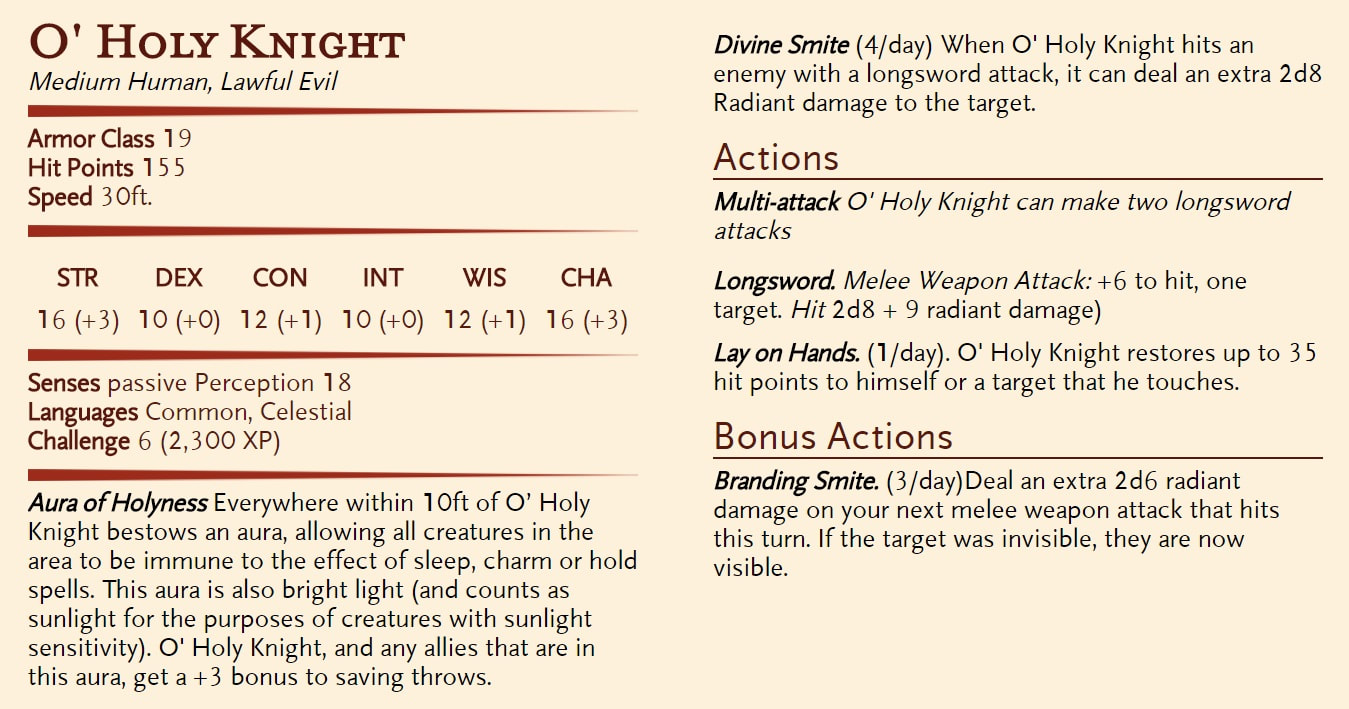

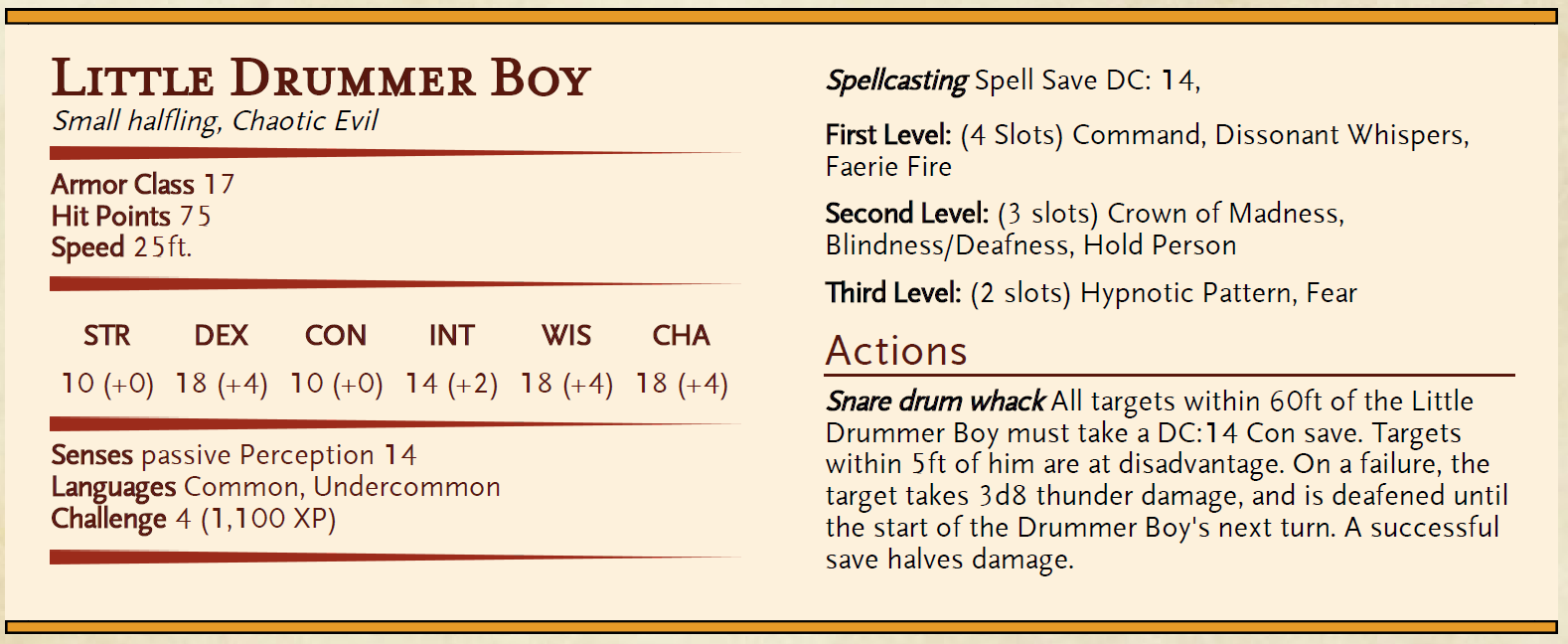
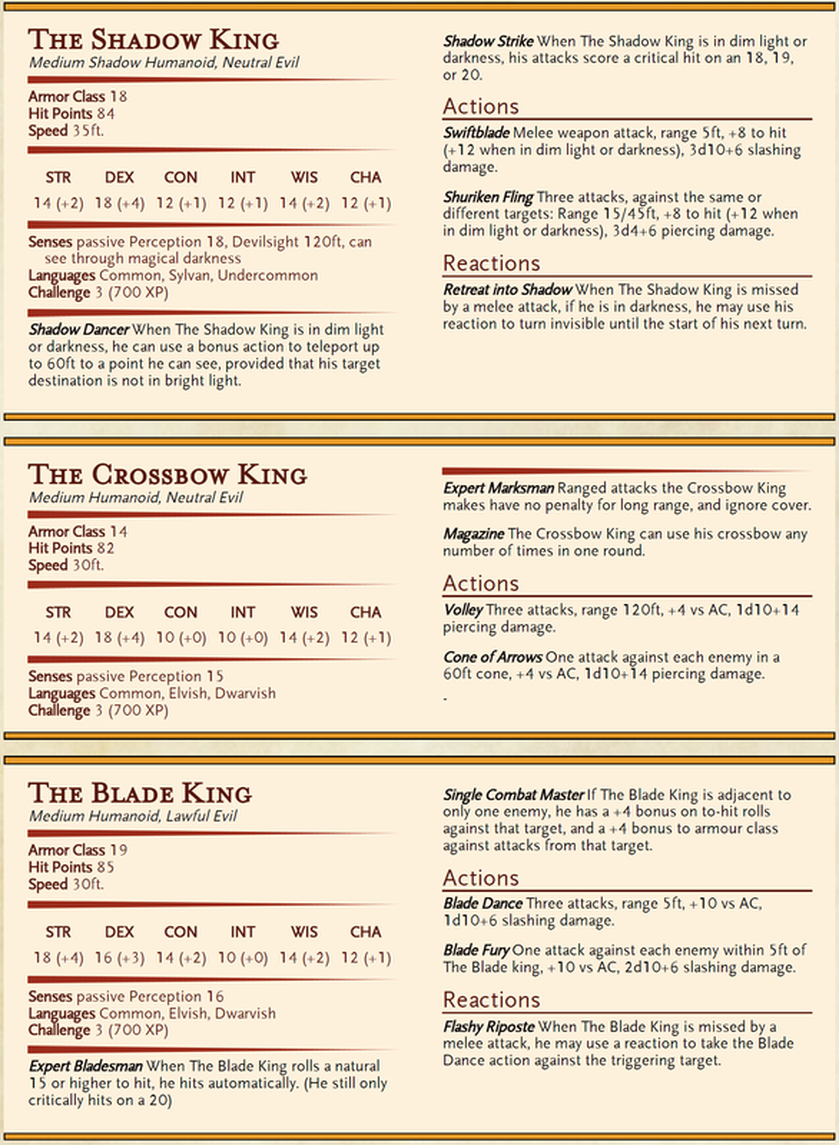
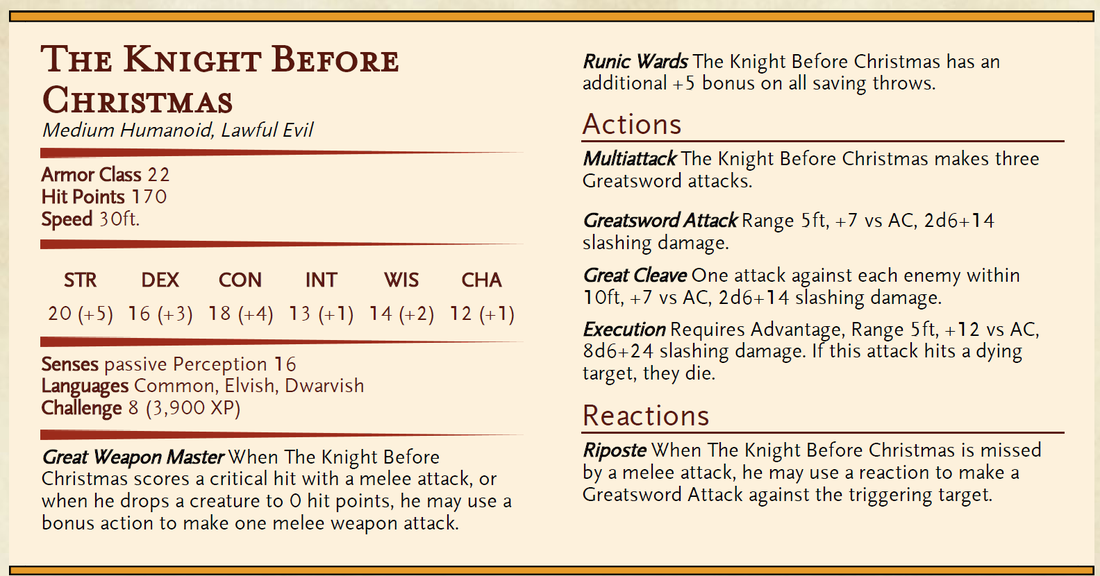
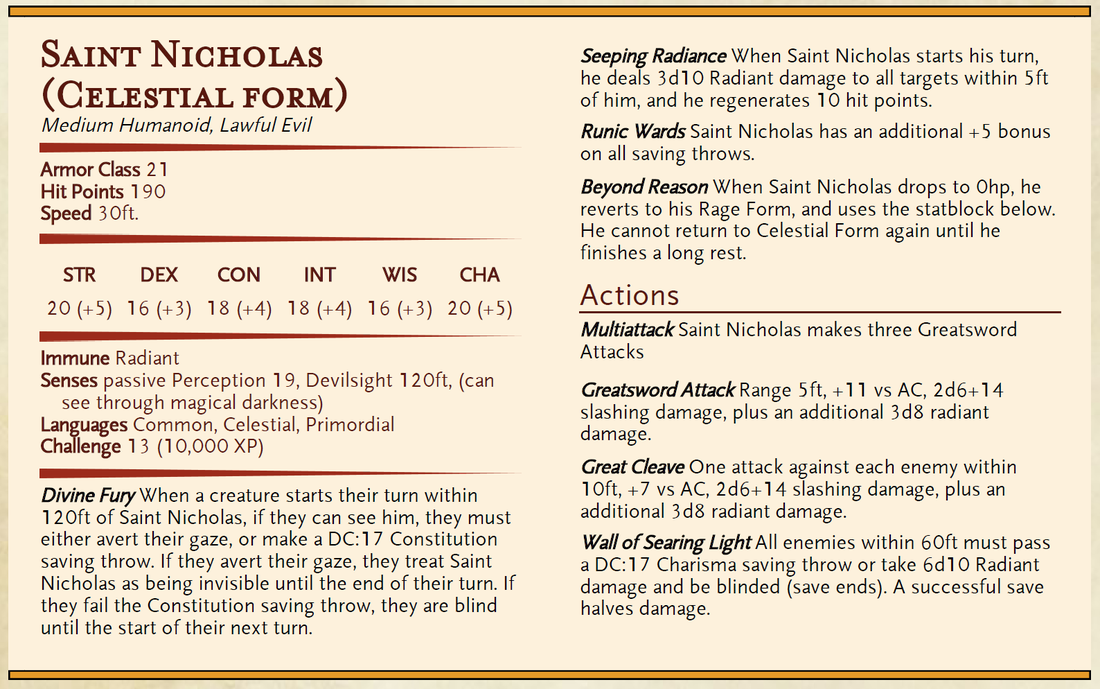
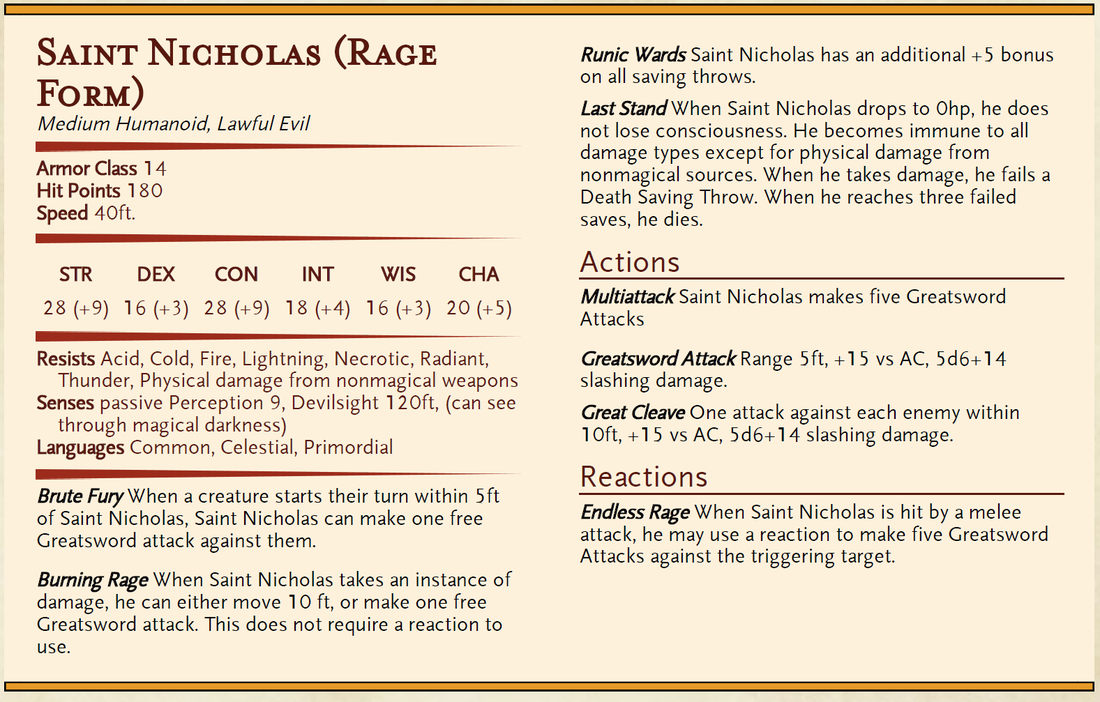

 RSS Feed
RSS Feed